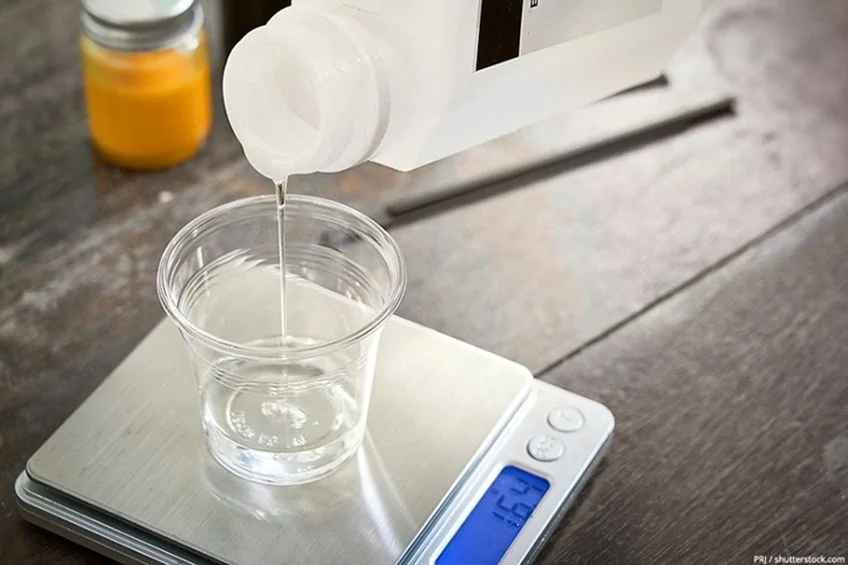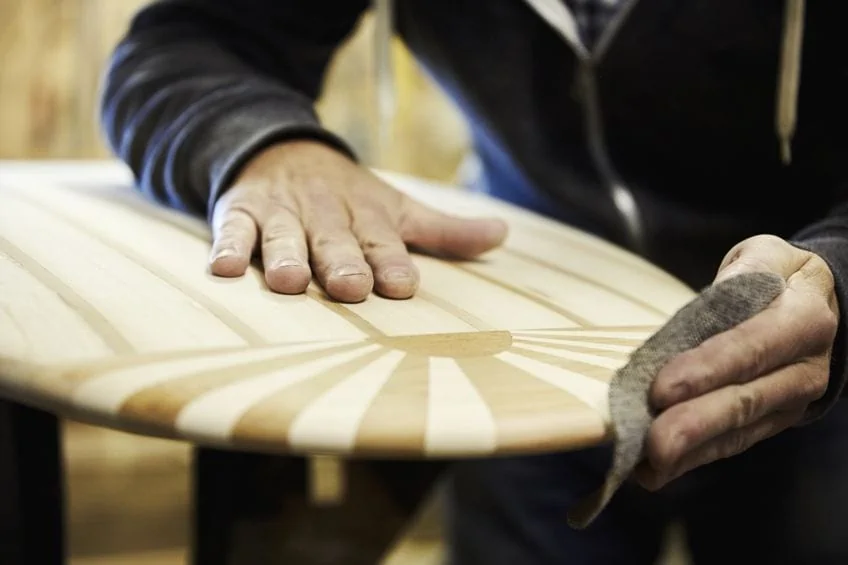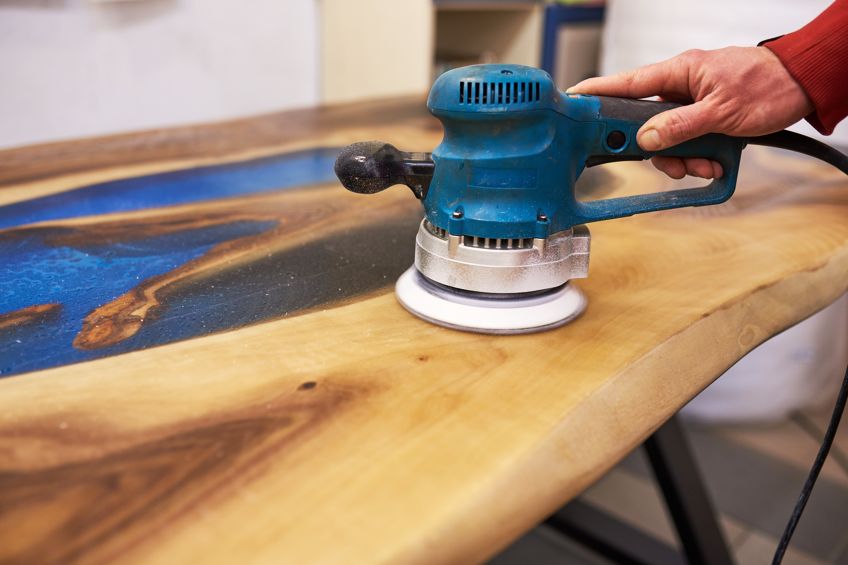Sanding Epoxy Resin – The Best Guide for How to Sand Epoxy Resin
This post may contain affiliate links. We may earn a small commission from purchases made through them, at no additional cost to you. You help to support resin-expert.com
Whether you are making an epoxy and wood table or creating beautifully hand-crafted resin goods, sanding is an essential part of the process. By sanding your epoxy, you will create a smooth and polished surface that finishes your piece off perfectly. Sanding resin can be a tricky process, especially if you are attempting to sand epoxy for the first time. In this guided article, we discuss the best methods for sanding resin and show you exactly how to sand epoxy resin to produce the best results.
Table of Contents
How Easy Is It to Sand Epoxy Resin?
When it comes to sanding epoxy resin, there are a few things that you should be aware of. Epoxy resin can be tricky and a little risky to sand, but with the right tips and tricks, you will be able to sand epoxy safely. The main difficulty when sanding resin lies in the hardness of the surface. The main safety concern when sanding epoxy lies in the toxicity of the particles.
The Hardness of Epoxy Resin
Epoxy resin has two components; a hardener and liquid resin. When combined, the chemicals in the two components react, creating a very hard solid surface. The hardness of this resin surface can quickly dull and clog abrasive sandpaper. You will need to replace your sandpaper relatively frequently, in order to keep the sanding process effective.
Wet sanding can significantly reduce the clogging of your sandpaper.
Remaining Safe When Sanding Resin
The dust produced when sanding resin can cause serious health problems if inhaled. The small resin particles are carcinogenic and can damage your lungs, so it is always recommended that you wear some sort of mask when you sand epoxy. Wet sanding can also help reduce the amount of dust that is produced and set airborne as you sand epoxy resin.
What Is the Best Method for Sanding Resin?
We always recommend that you sand epoxy resin wet with waterproof sandpaper. Wet sanding is by far the best way to remove any uneven areas and it reduces the clogging of your sandpaper by the resin dust particles. As we have said already, wet sanding can also be the safer option, as the water prevents too many of the epoxy dust particles from becoming airborne. As the water gathers the dust particles, you are able to see the effects of your sanding more clearly.
Not only this, but waterproof sandpaper can last significantly longer when you wet sand, as the resin does not wear out the grit as quickly.
Can You Dry Sand Epoxy?
While we typically do not recommend it, you absolutely can dry sand resin, and there are a few instances where it is your best option. When you are working with a combination of epoxy and wood, wet sanding can cause the wood to swell which is not ideal. On the whole, it is not recommended to dry sand. The heat caused by dry sanding with an orbital sander can actually dissolve the epoxy resin. The dissolved resin will become matt, and it will take a great deal of effort to restore the luster.
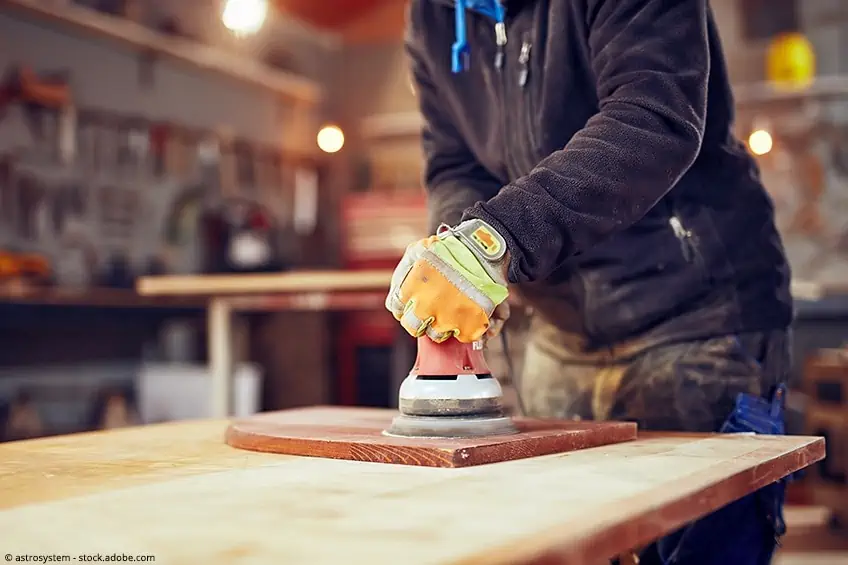
A Guide to Wet Sanding Resin
Typically, wet sanding should always be done by hand. The combination of water and an electrical sander is a recipe for a horrible shock. There are a few different methods that you can use to wet your resin while sanding, and we will cover all of these in a little more detail.
There are also a few different tools that you will need, and we will go through these soon. First, let us take a look at the pros and cons of wet sanding resin surfaces.
PROS
- Improves performance
- Reduces dust formation
- Increases longevity of sandpaper
- Keeps the surface free from dirt and dust
CONS
- Can be messy
- Not suitable for wood and epoxy combinations
Waterproof Sandpaper
Wet sanding resin would be significantly more difficult if you were to use traditional sandpaper. Normal sandpaper would become soggy and fall apart with extended exposure to water. As such, if you are going to wet sand epoxy, we suggest using waterproof sandpaper. Waterproof sandpaper is made from a closed layer of silicon carbide that resists the effects of water.
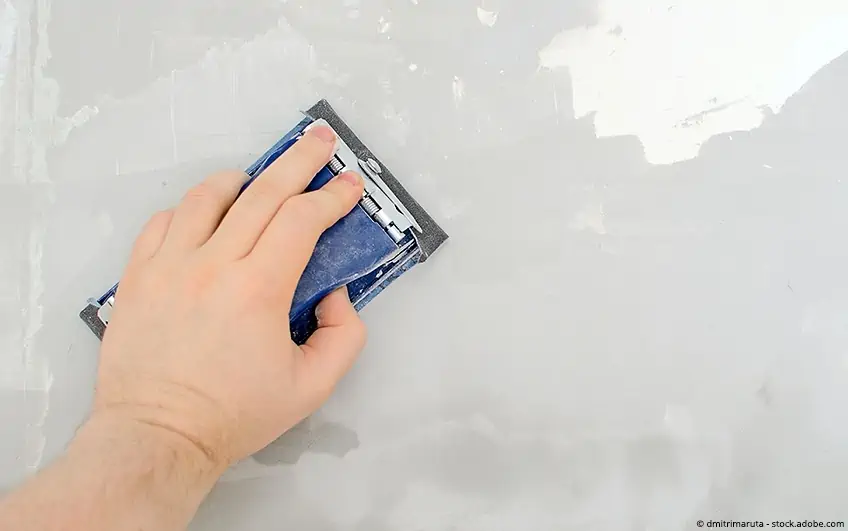
The Best Waterproof Sanding Block: WARNER Sanding Block
When it comes to sanding blocks, you really cannot do better than this warner hand sander. The 12cm long block fits perfectly in your hand and allows you to easily sand flat surfaces as well as corners and curves. The dimpled rubber surface helps you to smooth out small surface imperfections.
- Suitable for sanding corners, curves, and flat surfaces
- Dimpled rubber surface to adjust for surface imperfections
- Easy-to-grip handle and easy to load with standard sandpaper
The handle is specially designed for easy grip, and you can load this sanding block with any kind of sandpaper that you need. This last feature makes this block versatile for any number of different sanding projects.
PROS
- Suitable for all kinds of sandpaper
- Easy-grip handle
- Fits perfectly in your hand
- Suitable for sanding curved, flat, and corner surfaces
CONS
- Does not come with sandpaper
The Best Waterproof Sandpaper: APPEX 42 Pcs Wet Dry Sandpaper Assortment
This set of sandpaper sheets has everything that you need for any kind of sanding project. The sandpaper is made of waterproof silicon carbide and the electrocoating ensures that the grit is homogeneously distributed. You can easily use this sandpaper for wet and dry sanding projects.
- Includes a total of 42 sheets of assorted grit sandpaper
- Made from electro-coated waterproof silicon carbide
- Suitable for wet and dry sanding by hand or block
This high-quality sandpaper is specially formulated to not crumble, tear or fall apart during use and is sized for sanding bloks or for use by hand.
PROS
- Comes in a wide range of different grits
- Waterproof
- Suitable for wet and dry sanding
- Comes with a lightweight holder
- High-quality sandpaper
CONS
- Less durable than more expensive brands
Different Methods of Wetting Your Epoxy
When it comes to wetting your resin for sanding, you have a couple of different options. You can use whichever method works best for you. One of the most popular methods simply involves dipping your sandpaper block into a bucket of water every now and then to keep it wet.
You can also use a spray bottle of water to keep your resin wet as you are sanding.
How to Sand Epoxy Resin Wet
Wet sanding is usually done by hand. Do not use an electrically operated grinding machine if you are sanding wet, as you could otherwise suffer an electric shock. As an alternative, you can use an air-powered sander for large surfaces. Here is a brief video tutorial for wet sanding a resin coaster.
We use a hard rubber sanding block to keep the paper smooth when smoothing and sanding most surfaces. A curved or soft backing may be required on curved surfaces, but you can wet the sandpaper without the block or backing by simply folding the cloth to fit the shape of your hand and dipping the paper in water.
On very irregular or textured surfaces such as a sculpture, the somewhat rigid, waterproof sandpaper does not adapt sufficiently to the curves.
Here you can use more flexible sanding pads, such as the 3m Scotch Brite, which can also be used wet. Simply dip the sandpaper into the water and sand the surface in a circular motion until you see no more traces of the previous grain.
Check the progress of the sanding process again and again by removing the sanding residues with a cloth. The epoxy resin surface should always be cleaned, especially when changing to finer grain size. Otherwise, there is a risk that the coarser, detached grains of sand will leave grinding marks again.
Hint: Any residues should be removed immediately after the last sanding process, as they are difficult to remove after drying.
To prepare the surface for a subsequent epoxy coating or painting work, wipe the dry surface with a paper towel to remove any remaining deposits, then gently sweep the surface with a broom. Do not use rags – they could contaminate the surface. If you want to paint the surface immediately after sanding, use an electrostatic dust cloth afterward. This will remove any dust particles that may still be present, which would worsen the result when painting.
How to Sand Epoxy Resin and Wood Tables
When working with a combination of wood and resin, dry sanding is the preferred method. We suggest that you sand the wood and epoxy elements separately, as they each require different sanding techniques and different grits.
In addition, if you sand both at the same time, you run the risk of the fine resin dust becoming embedded within the grain of the wood.
For large projects, like an epoxy and wood table, we suggest using an orbital sander. Here are a few tips and tricks to help you dry sand epoxy and wood.
- Protect your health, always wear a respirator mask to avoid inhaling the toxic dust. Work in a ventilated room
- Start with a grain size of 120 and work your way through to one-grain size if possible (at least 1000 grain size is recommended).
- If the sandpaper becomes clogged, there are special rubber sticks for this purpose, which remove the residue from the sandpaper surface.
- Make sure to completely remove the traces of the previous grit before you begin sanding again.
How to Remove Amine Blush
During curing, especially at fluctuating temperatures, a slightly sticky, waxy layer may form on the surface. Its appearance changes depending on the moisture content of the air, but it is usually more noticeable in cool, humid conditions. It may be difficult to see at all, or it may appear as a thin, greasy, or dull layer. However, this so-called amine redness can be removed and underneath it, the epoxy resin should be intact.
Due to the waxy surface, sanding with normal sandpaper does not work, as it will clog up immediately. Amine redness is not a problem in itself: it is the effect of it that is the problem. If you continue to work without removing this layer, it will prevent lacquers, other epoxy coatings, and other substances from bonding effectively and ensuring adhesion. The surface should therefore definitely be cleaned. Here is a great method for removing amine blush from your resin projects:
- First try to remove the layer with some warm water, soapy water, and a sponge
- If this does not work, try to remove it with spirit and a cloth
- Sanding with wet sandpaper and water is also a possibility
Sanding resin is an absolutely essential part of creating beautifully finished resin works. Although the process can be a little tricky, with the helpful tips in our guided article, you will have everything you need to sand epoxy resin safely and properly.
Frequently Asked Questions
What Can I Use to Sand Epoxy Resin?
We always suggest wet sanding resin for which you will need waterproof sandpaper. Waterproof sandpaper is made from silicon carbide and it is available in all the necessary grit sizes. The smallest grains can cause deep grooves in your epoxy, so we suggest starting with at least 120 grit.
What Grit Should I Use for Sanding Resin?
Grits are available from 60 to 1000 grits, but for the initial abrasion, you should only need around 120 grit. You can then move up to higher grits to polish your resin surface.
Can You Dry Sand Epoxy Resin?
You can dry sand epoxy resin, but it is not recommended unless you are sanding wood and epoxy at the same time. Wet sanding is always recommended as the heat from dry sanding can damage the resin.


